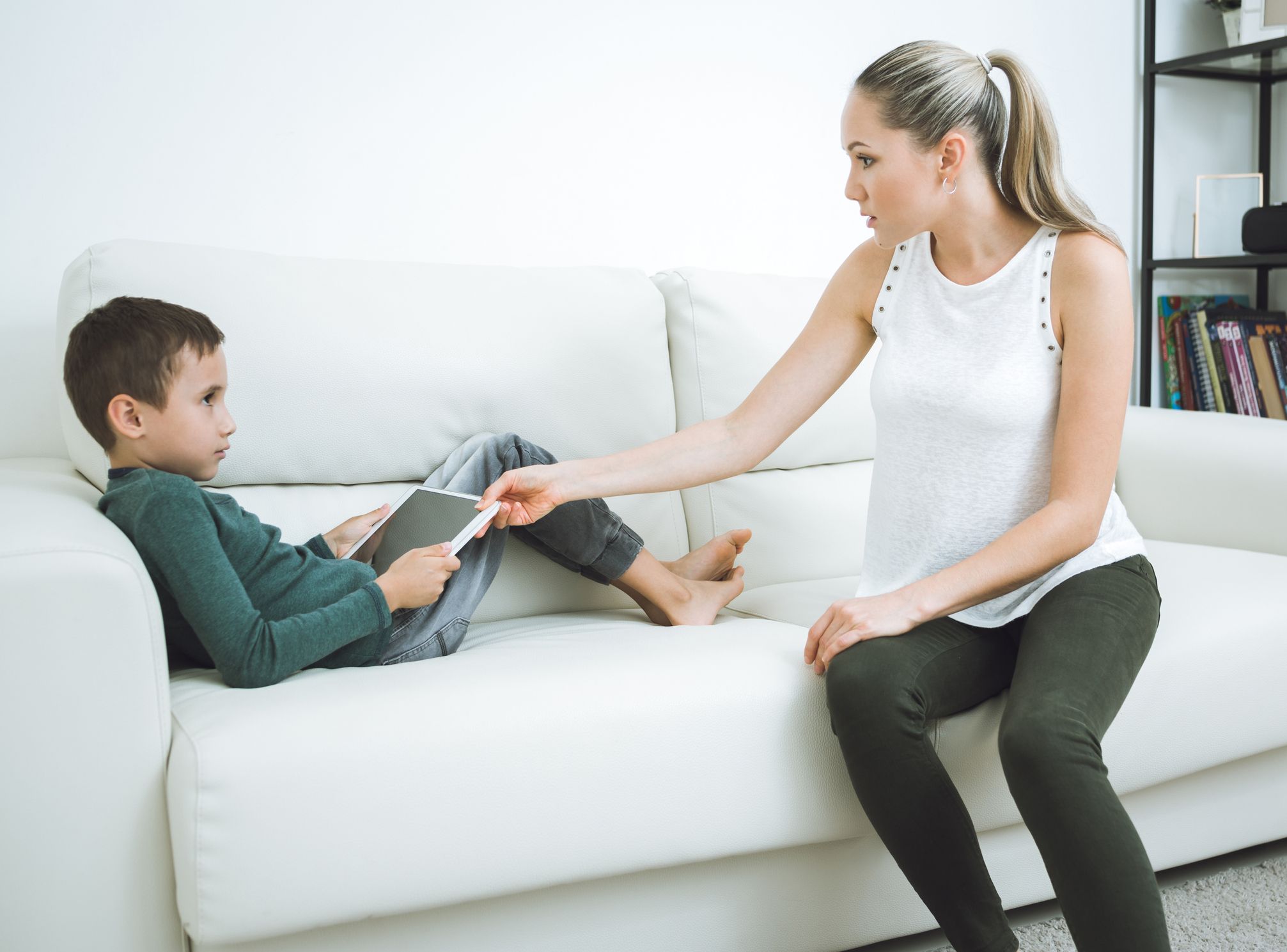If you're wondering why your teenager is glued to their smartphone or computer, you've come to the right place. The answer: Dopamine-Seeking Reward Loops—that’s why! Of course, it isn’t that simple—we can’t give the entire rap to Dopamine Seeking Reward Loops. There are plenty of other factors why teens get hooked: fulfilling emotional needs, boredom, lack of self-restraint, and connection with friends, to name a few.
Estimated reading time: 6 minutes
 We’re going to explore how dopamine affects teens and their developing brains. For the sake of ease, we’re going to shorten the culprit to Dopamine Loops through our discussion.
We’re going to explore how dopamine affects teens and their developing brains. For the sake of ease, we’re going to shorten the culprit to Dopamine Loops through our discussion.
The Brain Chemistry of Pleasure
First, a little background about the brain chemistry of pleasure and pleasure-seeking.
Initially, dopamine was earmarked as the brain’s pleasure chemical. New research shows that Opioids are linked more closely to the pleasure chemicals in brain chemistry, while Dopamine is the seeking chemical.
Dopamine is the neurotransmitter our brains release when we hear the ‘ping’ on our phone, anticipate a fun event, when we see our lover’s car pulling into the driveway, or when our favorite food is simmering in the kitchen. Dopamine is the neurotransmitter that says, “Something awesome is about to happen, so get ready!” Then, when the awesome thing happens, Opioids are released, and we get a surge of happiness.
Simply said, Opioids create a feeling of happiness, contentment or satiation, while Dopamine creates the feeling of looking for or seeking out those feelings of happiness, contentment, or satiation.
Of course, this is a much-simplified version of brain science, but it explains the basic principle.
Here’s the catch: The dopamine-seeking system is stronger than the Opioid contentment system. Even when we have a moment of contentment, the seeking system turns on and wants more pleasure, which can lead to more satisfaction. The seeking system is dissatisfied easily, and this brain chemistry contributes to the craving of teens (and you and me and everyone) to stay on screens longer than we intend.
Related reading: "The Dopamine Seeking-Reward Loop"
Muscle Memories Reinforce Habits
Next, we'll explore how muscle memory adds to the already robust Dopamine Loop.
Muscle memory is the ability of our bodies to remember things our brains are not entirely conscious of. With those muscle memory movements, we complete tasks automatically. Brain chemicals are released, and motions are put into action.
Think of driver’s education when you were young and learning to drive. Remember the dozens of details you had to learn and how clumsy it all felt? Even overwhelming? Now, executing a long sequence of tasks is second nature.
You act without any thought whatsoever! You don’t think about pressing the gas pedal, putting your foot to the break, shifting the clutch, turning on the blinker, or looking in rearview mirrors to check your blind spot. You just do them! You drive and arrive at your destination with little concentration. This series of completing tasks is called muscle memory.
Muscle memory is extremely powerful!
The phrase, “Like riding a bike,” is rooted in the power of muscle memory. This phrase implies that we never lose what we've learned no matter how long it's been. You can pick up right where you left off because your body remembers what it has learned and integrated.
Picking up an iPad, flipping on a computer and clicking a mouse, swiping a thumb or finger on your phone screen, and using a game controller are all muscle memory movements that contribute to and strengthen the Dopamine Loop in our brains.
How Dopamine Affects Behavior and Our Brains
Now with some brain science under our belts, let’s talk about how Dopamine Loops affect behavior.
With a Dopamine Loop in control, the seeking doesn’t let up. When we're stuck in the loop, a person is compelled by brain chemistry to keep clicking, searching, moving to the next level, and seeking the next great fix. Our brains respond automatically to pleasure pings, dings, dongs, and rings.
The Dopamine Loop in Control
- Your teen craves to follow the click-bait at the end of articles to find more and more.
- Your teen craves to watch the next episode of his Netflix marathon.
- Your teen craves to play the next level of her game, and the next, and the next.
- Your teen craves to respond, read, and react instantly to every notification from email, Instagram messages, or texts.
- Your teen craves the fix, ignoring the voice of responsibility, “Get off that screen right now!”
- Your teen’s brain craves… seeking, seeking, seeking like a heat-seeking missile.
Related reading:
Why We’re All Addicted to Texts, Twitter, and Google
Compulsion Loops and Dopamine in Games and Gamification
So we’ve established that the chemicals are the instigator and the behaviors are the effect. But we still want our teens to get off the screen!
How to Counter Dopamine and Screen Addiction
So what do we do when the dopamine loop is so powerful? What can we do as parents to help our children and teens find a healthy balance?
Do you know what else releases dopamine? Connection to each other. So stay close and even when preteens and teens push back when you request them to get off their phones, remember that this rebellion is also a cry for true connection!
And what else is possible for us to counter the negative effects of screen time?
We learn.
We model.
We teach.
We listen.
We empathize.
We draw boundaries.
We repeat.
We learn.
That is what you are doing right now! Keep learning and being the change you want to see in your family.
We model.
We must be the change we want to see in our families.
- Limit and modulate your own screen time.
- Plan counter-movements to disrupt screen muscle memory and interrupt the Dopamine Loop experiences.
- Avoid being on a screen first thing in the morning, right after work or school.
- Be present to your teen, especially at vital connection times.
- When you’re with your teen—no matter where and no matter how short the time—connect. Make eye contact. Unplug from your phone and converse. Listen, truly listen to your teen when they talk to you.
- Put everyone’s screens on silent mode, face down, and in a specific spot for portions of family time together.
- Decide as a family when, why, and how much technology is ideal. When you check your phone or computer during off times, as appropriate, let your teen and family know the reason. (I am texting my boss back, I looking for a recipe, I am responding to Aunt Marge’s request to visit, etc.)
- Participate in and create pleasure-seeking events and pleasurable outcomes in your daily life so your teen can see that life without a screen can also be filled with Dopamine and Opioids naturally.
"Teens and Screens: Does Your Child Have Screen Addiction?"
"Teens and Screens: Why Do Teens Love Screens So Much?"
We teach.
Have conversations with your teen and share what you’ve learned about screens and their effects.
- Teach your teen about the emotional fulfillment and brain chemistry of screen time.
- Help your teen devise their own plan and counter movement to interrupt the muscle memory of the Dopamine Loop.
- Empower your teen to design their own limits around screen use such as hours of use and non-use and when face-to-face vs. screen communication is best.
Screens, social media, and gaming are all the social currency of the modern era. Listen to your teen. What do they like and dislike about this social currency? Listen to their reasons for being on screens and the joys and challenges related to those experiences. Access and connection through technology are likely important for your teen, but 24/7 access is perhaps unhealthy.
We empathize.
Getting off screens can be challenging. Admit it, that’s true, even for adults.
For me, getting off a screen isn’t nearly as difficult as putting down a book in the middle of a page or hanging up the phone mid-conversation. These activities are hard for me to pull myself away from so I have used my personal experiences to help empathize with my children around their screen use.
I used to tell my children to get off screens, “RIGHT NOW.” However, when I imagined my husband asking me to put down my book mid-page or get off a phone call quickly, I realized it was similar for me as asking the kids to get off screens. Without the grace of a transition, a time to shift our attention, it feels intrusive. So now, I give them a 10-minute warning or let them finish the episode or complete a level in a game. Is that always feasible? Nope. Sometimes the episode has just started, or the game level might take too long, but allowing closure when possible helps increase respect and cooperation.
 We draw healthy boundaries.
We draw healthy boundaries.Even if it appears like teens want total freedom to do whatever they desire, it’s not true. Parents create the safety net of life and help teens understand expectations, set boundaries, assess consequences, and experience empathy and love. We, as parents, are helping to build healthy brains. Setting healthy limits around screens creates this safety net. The more involved the teen is in setting the limits and self-monitoring, the more successful the plan will be.
- Use apps or settings to monitor or limit screen time.
- Set schedules when screens can and cannot be used.
- Use timers to let teens know that screen time has ended.
- Create screen-free zones such as bedrooms, dinner tables, or family activity time.
- Let teens know what is and is not allowed/appropriate for screen activities.
Over and over and over again. Parenting is a circle of love that ebbs and flows. Our children constantly require energy, persistence, grit, empathy, and love. Keep the circle of love flowing. It may be hard work and requires tremendous consistency, but it's well worth the effort!
Finally, be gentle with yourself and your teen. Connect to your values. When we connect to our values, such as honesty, closeness, or fun and laughter, we plug into a deeper place in ourselves and our family. This grounding helps us walk the challenging ups and downs of parenting with more grace and ease.
And if you want additional support and added parenting skills, try parent coaching tailored to you or check out our parenting resources today.








